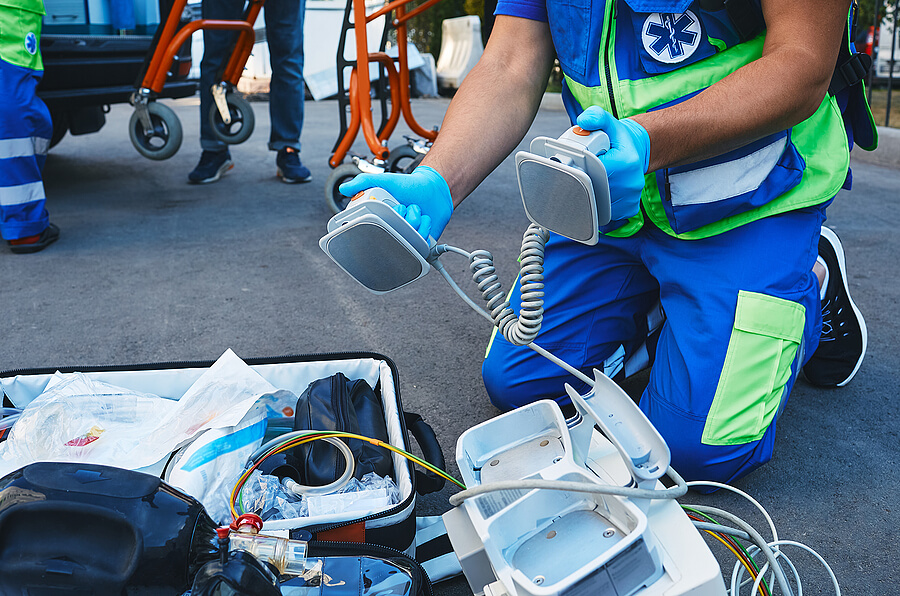
Ms Hemma Rajendra has a job unlike any other – she soars through the skies on missions to save lives. As a flight nurse with EMA Global, she delivers critical care during medical evacuation in Singapore and beyond. Whether on an air ambulance, a medical jet, or even a commercial flight, she ensures that patients receive continuous, life-saving attention throughout their journey.
A life-saving mission in the sky
In her role, Ms Hemma has seen and treated a vast array of medical emergencies. Last year, she flew on an air ambulance to care for a premature baby suffering from heart and lung complications. In another case, she assisted in evacuating a traveller injured while exploring the Arctic Circle. Each mission presents new challenges, requiring quick thinking, adaptability, and advanced medical skills.
Her work is part of a highly trained evacuation crew comprising pilots, paramedics, doctors, and fellow flight nurses. Together, they provide bedside-to-bedside care, ensuring seamless patient transfers across borders.
Training to become a flight nurse
Becoming a flight nurse requires years of experience and rigorous training. Ms Hemma, who has been a registered nurse for over eight years, previously worked in an intensive care unit (ICU) in Kuala Lumpur, Malaysia. Before she could transition into flight nursing, she had to complete certifications in advanced life-saving techniques, including cardiac emergency management and neonatal resuscitation.
Her training intensified once she joined EMA Global. She underwent extensive flight simulations, aviation medicine courses, and physiology training to prepare for the demands of high-altitude patient care. “Being a flight nurse combined the two passions I have – travel and nursing,” she says.
Beyond medical expertise, physical fitness is essential. The job involves operating stretcher systems, carrying oxygen tanks, and navigating tight aircraft spaces. “I just know I need a whole lot of fitness for all of this,” she notes.
How emergency evacuations work
When an emergency call comes in, the operations team immediately assesses the situation. For regional evacuations, such as within Malaysia, the team can be ready within four hours. For longer distances, such as Europe or North America, flights are arranged within 24 to 48 hours.
The mode of transport depends on the patient’s condition. Some missions require a specialised air ambulance in Singapore, while others involve commercial airlines. In commercial flights, the medical team secures the best seating arrangement, whether a business-class seat or multiple reserved economy seats, to ensure patient comfort.
On board, flight nurses prepare for every possible scenario. They check and recheck medical supplies, from emergency medications to backup oxygen tanks – one missing piece of equipment could mean the difference between life and death.
The unpredictable nature of the job
Every mission is unique, and flexibility is key. Ms Hemma recalls an emergency in Udon Thani, Thailand, where the original plan was to evacuate a Danish patient to Singapore. Upon assessing him in person, the team decided he needed to be flown directly to Denmark instead. This sudden change required immediate adjustments, but the team executed it seamlessly.
Flight nurses also deal with incomplete medical information. In such cases, the team must quickly decide whether to wait for the patient to stabilise or coordinate with local healthcare providers for alternative solutions.
Balancing travel and life-saving work
Ms Hemma’s role allows her to travel worldwide, but her job is far from glamorous. She is on call 24/7 during her shifts and can be activated at any moment – whether at 2 AM or midday. Missions can last anywhere from a few hours to several days, depending on the complexity.
Despite the challenges, she finds immense fulfillment in her work. Her experiences have taken her to diverse locations, from bustling cities like San Francisco to remote areas in Nepal and the Arctic.
Providing global assistance in critical moments
EMA Global specialises in medical evacuation in Singapore and worldwide. Our work ensures that patients receive the urgent care they need, regardless of location. From ski accidents in Japan to monsoon-related injuries in Southeast Asia, the demand for global assistance is ever-present.
Ms Hemma’s dedication reflects the commitment of all flight nurses who risk their own comfort to ensure others receive timely, life-saving care.
For more about her incredible journey, read the full article from CNA.

